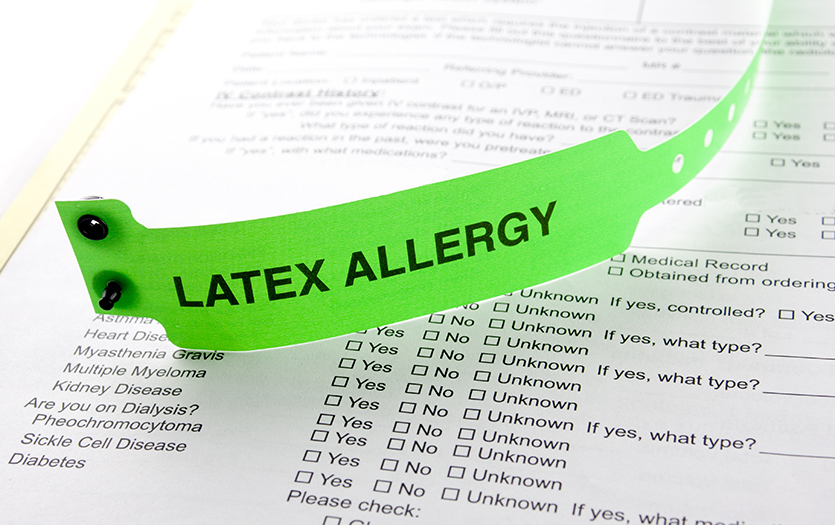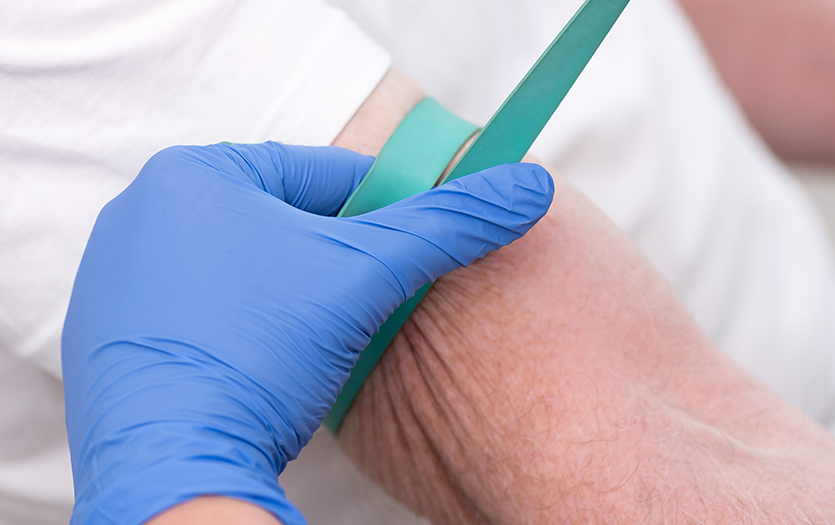
If you have ever experienced discomfort or itching after wearing disposable gloves, you may have a latex allergy. This irritant is a natural form of rubber made from the sap of the rubber tree (Hevea brasiliensis). It can be found in everyday items such as bandages and party balloons. During an allergic reaction, the immune system attacks a substance typically considered harmless, such as latex, as though it were trying to harm the body. In this post, we discuss individuals who are most at risk, factors that can trigger an allergic reaction, and guidance on handling latex exposure and alleviating symptoms.
Who is at risk?
Individuals with allergies to certain foods are more likely to have latex allergies. Foods like bananas, chestnuts, kiwi, avocados and tomatoes contain a protein similar to that found in rubber.
Latex allergies are also more common in people who have a history of atopic dermatitis (eczema), a skin condition that causes intense itching and a rash. In lighter skin, the rash may look pink or red. The rash may not be as apparent in darker skin, or it may look dark brown, gray, purple or present as patches of lighter skin.
Additionally, those interacting with rubber-derived material are often at a higher risk of developing an allergy. According to the Centers for Disease Control and Prevention (CDC), this is especially true for individuals with occupations in healthcare environments, housekeepers, hairdressers and workers in industries that manufacture latex products.

Symptoms
Symptoms of latex allergies vary in severity. Mild signs of an allergic reaction following contact with a latex product include:
- Itching
- Skin inflammation
- Rash or hives
- Sneezing
- Runny nose
- Coughing
- Wheezing
- Scratchy throat
- Difficulty breathing
For those who experience more serious symptoms, latex can cause severe or even life-threatening reactions, such as anaphylaxis. In the event of an anaphylactic reaction, seek emergency services immediately.
Trigger avoidance
Continuous or repeated exposure to latex can increase the immune system's response, leading to more intense allergic reactions over time. The best preventative measure is to avoid all interactions with the substance. Everyday products that could cause an allergic reaction include:
Medical products
- Gloves
- Drains
- Tourniquets
- Urinary catheters and wraps
- Adhesives used for bandages, dressings and tapes
Personal or household
- Contraceptives, such as condoms and diaphragms
- Diapers and sanitary pads
- Pacifiers and baby bottle nipples
- Balloons and rubber toys
- Rubber bands
- Computer mouse pads

Although there are various latex-free alternatives, manufacturers can change their product makeup at any time. The U.S. Food & Drug Administration (FDA) recommends always checking the ingredients and the materials contained in an item before using it.
Labels may use the following names to indicate the presence of latex:
- Natural rubber latex
- Natural latex rubber
- Rubber latex
- Natural Latex
- Latex rubber
- Natural centrifuged latex
- Natural liquid latex
- Aqueous latex adhesive
How is a latex allergy diagnosed?
Diagnosing a latex allergy involves a thorough physical exam and several tests. The healthcare provider will ask about symptoms and recent latex exposure and gather information about the patient’s medical history. A blood test can uncover an allergy by detecting latex antibodies, while skin tests reveal a positive reaction to the irritant. Skin tests should always be administered by experienced doctors, such as an allergist, equipped to respond to a severe reaction.
Treatment
The best treatment for a latex allergy is to avoid the material and products containing the ingredient. Severe reactions may need to be treated in a hospital. Individuals who are prone to severe reactions are recommended to carry an EPIPEN® (epinephrine shot). Mild cases can usually be treated at home using an over-the-counter non-drowsy antihistamine such as Claritin® (loratadine).
Final remarks
The key to managing a latex allergy lies in avoidance. Consulting with an allergist can provide you with personalized strategies for effectively managing latex allergies. Parkview has two Allergy, Asthma & Immunology practices in Fort Wayne and one in Auburn. If you're interested in establishing care with one of our providers, talk to your primary care provider or call 260-425-6070, Monday through Friday from 8 a.m. - 5 p.m.
Copyrighted material adapted with permission from Healthwise, Incorporated. This information does not replace the advice of a doctor.




